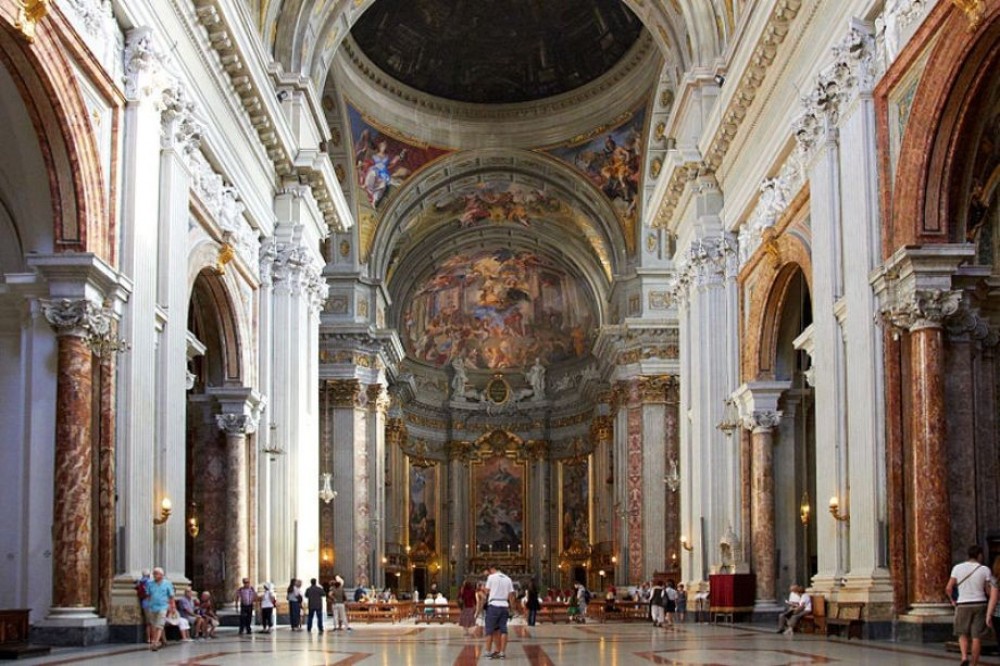Embodiment of Baroque Grandeur: A Comprehensive Exploration of the Church of Sant’Ignazio di Loyola in Rome

Nestled in the heart of Rome’s historic center, amidst the labyrinthine streets and storied piazzas, stands a testament to the grandeur and opulence of the Baroque era – the Church of Sant’Ignazio di Loyola. In this extensive journey through art, history, and spirituality, we delve deep into the captivating allure of this architectural marvel, unraveling its rich tapestry of symbolism, artistic mastery, and religious significance.
A Tribute to Jesuit Splendor
Constructed in the 17th century under the patronage of the Society of Jesus (Jesuits), the Church of Sant’Ignazio di Loyola stands as a fitting tribute to its namesake, St. Ignatius of Loyola, the founder of the Jesuit order. Designed by renowned architects such as Carlo Maderno, Giovanni Battista Soria, and Andrea Pozzo, the church embodies the Jesuit ideals of scholarship, spirituality, and missionary zeal, while also serving as a showcase for the exuberant artistry of the Baroque period.
Architectural Marvels
The façade of Sant’Ignazio di Loyola may appear unassuming from the outside, but upon stepping through its doors, visitors are transported into a world of breathtaking beauty and architectural ingenuity. The interior of the church is a symphony of marble, stucco, and gilt, adorned with intricate frescoes, ornate altars, and dazzling trompe-l’œil paintings that create an illusion of infinite space and celestial splendor.
One of the most iconic features of the church is its stunning ceiling fresco, painted by the Jesuit artist Andrea Pozzo. This masterpiece of Baroque illusionism depicts the apotheosis of St. Ignatius, surrounded by angels and cherubs, ascending into the heavens amidst billowing clouds and radiant light. The effect is nothing short of miraculous, drawing visitors into a transcendent realm of spiritual ecstasy and divine grace.
Symbolism and Allegory
Every aspect of the Church of Sant’Ignazio di Loyola is infused with layers of symbolism and allegory, reflecting the theological and philosophical ideals of the Jesuit order. The elaborate decorations, including statues, reliefs, and decorative motifs, serve as visual representations of Christian doctrine and Jesuit spirituality, inviting worshippers to contemplate the mysteries of faith and salvation.
The church’s main altar, dedicated to St. Ignatius, features a monumental sculpture of the saint in triumph, flanked by allegorical figures representing the virtues of faith, hope, and charity. Surrounding the altar are scenes from the life of St. Ignatius, depicted in exquisite detail, while above, a majestic dome soars heavenward, crowned with a lantern symbolizing divine enlightenment and spiritual guidance.
Spiritual Oasis in the Heart of Rome
In addition to its architectural and artistic splendor, the Church of Sant’Ignazio di Loyola serves as a spiritual oasis amidst the hustle and bustle of urban life. Pilgrims and worshippers from around the world flock to its hallowed halls to seek solace, inspiration, and communion with the divine. The church’s tranquil atmosphere, illuminated by flickering candlelight and suffused with the scent of incense, offers a sanctuary for prayer, reflection, and contemplation.
Throughout the year, the church hosts religious ceremonies, concerts, and cultural events that celebrate its rich heritage and foster a sense of community and fellowship among believers and art enthusiasts alike. From solemn masses to vibrant festivals, Sant’Ignazio di Loyola continues to be a beacon of faith, hope, and artistic expression in the heart of Rome.
Conclusion: A Testament to Human Creativity and Devotion
As we bid farewell to the Church of Sant’Ignazio di Loyola, we are reminded of the enduring power of human creativity and devotion to transcend the constraints of time and space. In the splendor of its architecture, the beauty of its art, and the sanctity of its atmosphere, we find inspiration and solace, drawing closer to the divine and to one another.
May the spirit of Sant’Ignazio di Loyola continue to illuminate our hearts and minds, guiding us on a journey of faith, enlightenment, and artistic exploration. And may its legacy endure for generations to come, inspiring future generations to strive for excellence, embrace beauty, and seek communion with the divine.




